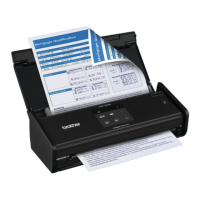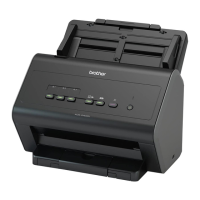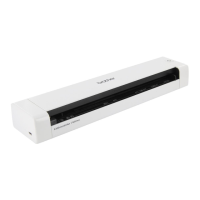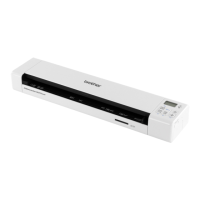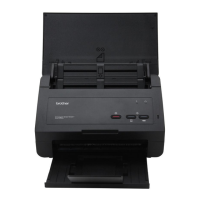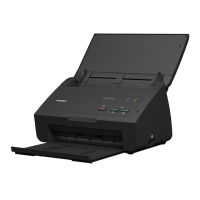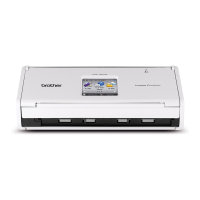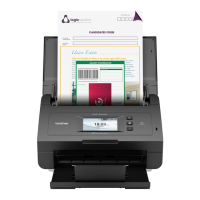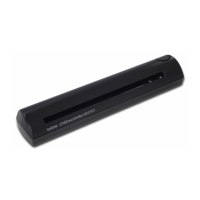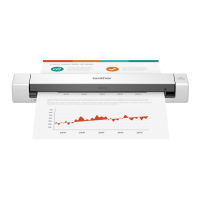What does multifeed detection mean on Brother ImageCenter ADS-2400N?
- BbradytrevorAug 29, 2025
If your Brother Scanner is detecting a multifeed, it means multiple pages were fed at the same time. Clear the Multifeed.
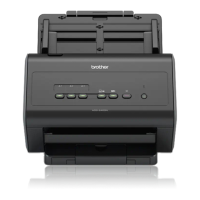
What does multifeed detection mean on Brother ImageCenter ADS-2400N?
If your Brother Scanner is detecting a multifeed, it means multiple pages were fed at the same time. Clear the Multifeed.
What to do if my Brother ImageCenter ADS-2400N Scanner says 'Insufficient USB Storage'?
If your Brother Scanner indicates insufficient USB storage, it means the inserted USB flash drive is full. Press any button (ADS-2400N / ADS-3000N) or (ADS-2800W / ADS-3600W), and then: * Delete unused files or folders from the USB flash drive and try again. * Use a USB flash drive that has available space.
What does USB Access Error mean on Brother ImageCenter ADS-2400N?
If your Brother Scanner shows a USB Access Error, it means the USB flash drive was removed while it was being accessed. Press any button (ADS-2400N / ADS-3000N) or (ADS-2800W / ADS-3600W).
What to do if my Brother Scanner is unable to scan and shows an error code?
If your Brother Scanner displays an error code and is unable to scan, turn the scanner off and then on again, and then try to scan again. If the error persists, make a note of the error message.
What to do if my Brother ImageCenter ADS-2400N is in Offline Mode?
If your Brother Scanner is in Offline Mode, it means the machine is not connected to the computer. Connect the machine to the computer and turn on the machine.
Why is my Brother ImageCenter ADS-2400N scanning so slow?
If your Brother Scanner is scanning too slowly, decrease the scanner resolution. Also, set the scan size to a setting other than Auto.
What to do if my Brother ImageCenter ADS-2400N says 'Document Jam/ Too long'?
If your Brother Scanner is experiencing document jams or indicating the document is too long: * First, clear the document jam. * Adjust the Paper Guides to fit the width of the document. When Scan Size is set to Auto and you are scanning a document that contains multiple page sizes, insert narrow pages straight and as close to the center of the machine as possible. If the document does not feed straight, use Continuous Scanning. * Confirm your settings are suitable for your document. * Clean the Pick Up Roller and Reverse Roller to remove any accumulated paper dust.
| Scan Resolution | 600 x 600 dpi |
|---|---|
| Maximum Resolution | 1200 x 1200 dpi |
| ADF Capacity | 50 sheets |
| Duplex Scanning | Yes |
| Scanning Speed (simplex) | Up to 30 ppm |
| Scanning Speed (duplex) | Up to 60 ipm |
| Connectivity | USB 2.0, Ethernet |
| Grayscale Depth | 8-bit |
| Supported Operating Systems | Windows, macOS, Linux |
| Scanning Method | CIS (Contact Image Sensor) |
| Scan Destinations | Email, Network |
| Color Depth | 24-bit |
| Scan Speed (Black & White, A4, 200dpi) | 30 ppm |
| Scan Speed (Color, A4, 200dpi) | 30 ppm |
| Scanner Type | Sheetfed Scanner |
Access frequently asked questions and support resources for Brother products.
Lists US phone numbers and website for technical support.
Provides Canadian support website and contact details.
Information on finding authorized service centers in the USA and Canada.
Save scanned documents directly to a USB flash drive.
Scan documents directly to a shared network folder.
Send scanned documents directly to an email address from the machine.
Scan documents directly from your Android, iOS, or Windows Phone.
View and edit scanned documents saved to iCloud using your iOS or Macintosh.
Secure your machine by setting passwords and user access controls.
Enhance scanning efficiency with features like NFC and one-touch scans.
Transmit scanned data directly to an FTP/SFTP server without a computer.
Transmit scanned data directly to SharePoint without a computer.
Scan documents to email, network folders, or web services.
Details on paper sizes, weights, and types that can be scanned.
Lists documents that cannot be scanned successfully.
Information on the number of sheets that can be loaded based on paper size/weight.
Provides an overview and diagram of the machine's components and ports.
Details the buttons and indicators on the control panel for specific models.
Explains how to navigate and use the touchscreen interface for various functions.
Explains how to add and manage frequently used scan and Web Connect settings.
Guides users on accessing and configuring various machine settings.
Covers fundamental operations like navigating menus and using the touchscreen.
Instructions for adding ID card shortcuts for the ADS-3600W model.
Guides on how to modify existing scan or Web Connect shortcuts.
Information on how menu settings are stored and retained.
How to adjust the volume level for button presses and errors.
How to program the machine to automatically adjust for DST.
How to configure the machine's power-saving sleep mode duration.
Set passwords to prevent unauthorized changes to machine settings.
Restrict access to machine operations for specific users or groups.
Instructions for setting up card authentication for users on the ADS-3600W.
How to restrict operations for users without a password.
Restrict machine usage via Active Directory user credentials.
Restrict machine usage via LDAP user credentials.
Details on paper sizes, weights, and types that can be scanned.
Lists documents that cannot be scanned successfully.
Information on the number of sheets that can be loaded based on paper size/weight.
Instructions for attaching the ADF and output tray for scanning.
Guidelines for properly loading various types of documents into the ADF.
Procedure for scanning business cards using the scanner.
Procedure for scanning plastic cards, including settings.
Instructions for scanning documents that exceed standard length.
Pre-scan checks for software installation and cable security.
Steps to set up network scanning for Windows operating systems.
Steps to set up network scanning for Macintosh operating systems.
Explains how to switch between Home and Advanced modes in ControlCenter4.
Guides on using the Home Mode interface for scanning functions.
Guides on using the Advanced Mode interface for detailed scanning options.
Instructions for scanning documents using a carrier sheet.
Procedure for scanning plastic cards, including settings.
Save scanned documents directly to a SharePoint server.
How to customize default settings for scan buttons.
Create custom tabs and buttons in ControlCenter4 for preferred settings.
Adjust various settings for scanning operations within ControlCenter4.
Guides on using ControlCenter2 for scanning on Macintosh.
Scan images directly into applications using ControlCenter2.
Convert scanned documents to editable text using ControlCenter2.
Correct document skew and automatically rotate images based on text orientation.
Adjust image quality with settings like brightness, contrast, and color tone.
Manage blank page skipping, continuous scanning, and multifeed detection.
How to save scanned documents to a computer via ControlCenter Home Mode.
Save scanned documents directly to a USB flash drive.
Setup and configuration steps for scanning to an FTP server.
Setup and configuration steps for scanning to an SFTP server.
Scan documents directly to a shared folder on a local network or internet.
Set up default profiles for scanning to network locations.
Send scanned documents directly to email addresses via the control panel.
Register, change, or delete email addresses in the scanner's address book.
Create and manage email groups for sending scanned documents.
Use Status Monitor utility to check machine status and receive error notifications.
Use Status Monitor utility to check machine status and receive error notifications.
Step-by-step guide to cleaning the exterior of the scanner.
Instructions for cleaning the scanner glass, pick-up roller, and reverse roller.
Information on replacing parts like pick-up rollers and reverse rollers.
Overview of reset options for network, address book, and all settings.
Steps to reset the machine to factory settings for specific models.
Steps to reset the machine to factory settings for specific models.
Initial checks to perform when troubleshooting machine issues.
Explains error messages and routine maintenance alerts.
Step-by-step guide to clearing document jams from the ADF.
Addresses issues like installation errors and starting ControlCenter.
Troubleshooting steps for network scanning and connectivity issues.
How to check machine serial number and wireless settings.
Overview of reset options for network, address book, and all settings.
Indicates scanner support for color and black/white scanning.
Lists operating systems compatible with TWAIN, WIA, ICA, and ISIS drivers.
Details color depth processing and scanning resolutions.
Details compatible media and interface for USB direct scanning.
Details USB interface types and cable length recommendations.
Specifies Ethernet cable requirements and wireless standards supported.
Explains how to use the on-screen keyboard for text input.
Explains the meaning of LED lights on the control panel.
Identifies error codes and required service calls based on LED patterns.
Lists available scan settings configurable via computer and control panel.


